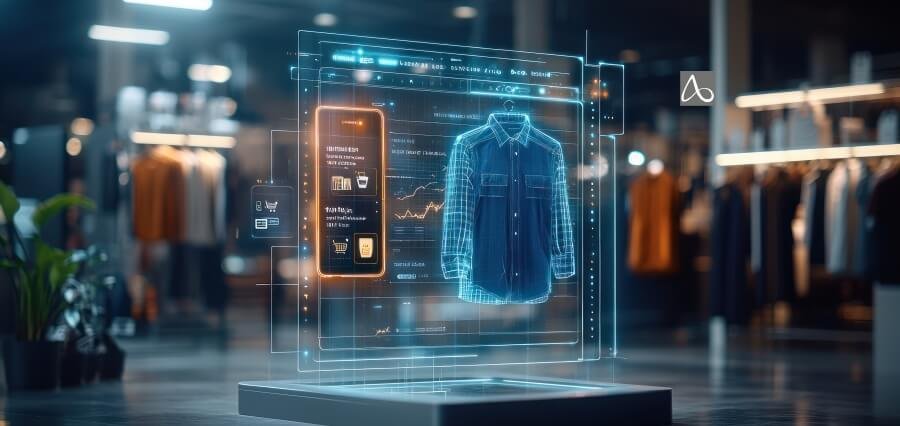The past two decades have revolutionized the retail space with the internet as the driving force for a new business era. E-commerce, being an experiment a decade ago, has now become an integral part of everyday life, reshaping customer expectations, global supply chains, and competitive business strategies. Whereas the initial wave of e-commerce was abundance in numbers and convenience, the second wave will be experiential, technology-enabled efficiency, and individualized. The wave will not just improve existing models of shopping but revolutionize the buyer-seller interface. Behind such change lies a set of technologies including virtual and augmented reality, artificial intelligence, blockchain, and new logistics technologies. These innovations are not emerging individually but are converging to form an integrated retailing space where customer delight, trust, and engagement shall emerge as the driving force. Those companies which hasten and make a strategic transition for these innovations will be the ones who achieve a competitive edge and the rest will be vulnerable to being rendered old in an ever-evolving market situation.
AI-Powered Personalization
The hallmark of the next wave of e-commerce is AI-based hyper-personalization. The consumer no longer wants cookie-cutter recommendations or blanket-brush marketing approaches. They now want retailers to suggest based on their perception of what they like, offer personalized product alternatives, and simplify shopping in terms of individual requirements. Sophisticated algorithms are making it possible for stores to scan enormous data, ranging from web-surfing history to social media activity, in order to know what a customer might need even before he even searches for it. In the hands of this power, in addition to building a better customer experience, it calls for conversion as well as repeat buying.
Apart from product recommendation, AI is changing customer service in the form of smart chatbots and virtual assistants that assist in real-time. These technologies can respond to queries, facilitate transactions, and even provide suggestions at a human level of accuracy in terms of style or products. Persistent, context-specific conversations are facilitated by retailers to construct their brand image as well as customer relationships. Following years will see AI move from personalization based on actively involved responses, when the retailers will be able to craft end-to-end shopping experiences for every single customer.
AR and VR Shopping
The transition from mortar-and-bricks shops to addresses has ushered in a natural problem: how to substitute the feel and touch of shopping. The new pervasive solutions are virtual reality (VR) and augmented reality (AR), combining digital convenience and sense perception. People now try clothes virtually, imagine the look of the furniture in their own living room, or test makeup virtually on virtual models. The technologies eliminate uncertainty, reduce returns, and facilitate more assured purchasing decisions.
Other than functional value, AR and VR build experience-driven opportunity for items other than product purchase. Virtual showrooms, interactive brand experiences, and game-activated shopping experiences enable brands to differentiate themselves from the crowded marketplace. Such stores that adopt such immersive technologies are not only drawing the technologically inclined consumers but also the future generations, who increasingly demand to be engaged and to experience as much quality in products as possible. As more and more of these technologies mature within reach and mainstream, they will become a standard tool in the hands of the online consumer.
Smart Logistics and Sustainability
Every successful web purchase has an innovative logistics system deciding on speed, cost, and dependability. Future waves of Internet retailing revolutions will be interested in revolutionizing such systems with robotics, robots, and analytics. Robotic automated warehouses are enabling quicker ordering procurement with less human touch and glitches. Predictive analytics are also making supply chains more efficient by anticipating demand fluctuation and balancing stock levels with consumption patterns.
Autonomous transport and drone delivery are also moving toward more universal application, with the possibility of bringing much-faster last-mile capabilities to the doorstep and rewriting customer expectations altogether. They are becoming greener, and businesses are trying to green up. The drivers for change are carbon-neutral supply chains, returnable and reusable packaging, and supply chain tracing with blockchain. They are regulatory and socially responsible, but they build brand personality. Traders who walk the fine line of corporate conscience, profitability, and velocity by wedging efficiency and sustainability together will win in an extremely competitive world.
Conclusion
Future retailing innovations on the Internet chart the transition from transactional competence to experiential and ethical engagement. Artificial intelligence is allowing the retailers to provide levels of personalization never previously experienced, with immersive technologies like AR and VR changing the way people engage with products within a virtual world. Parallel to this, logistics innovation and sustainability are seeing that the back-end ecommerce technology also comes to evolve to similar levels of speed, transparency, and accountability. As these technologies cross-pollinate one another, the distinction between digital and physical buying will keep getting eroded, creating an efficient omnichannel ecosystem. Success tomorrow will not be in the rollout of one or two of these technologies in silos but in deliberately consolidating them into seamless customer experience. Those stores who seize innovation with dexterity and vision will not just be reacting to changing customer demand but will be establishing best practice in future trade.
Read Also: Mastering the Art of Influence: Powerful Leadership Techniques for Modern Success




